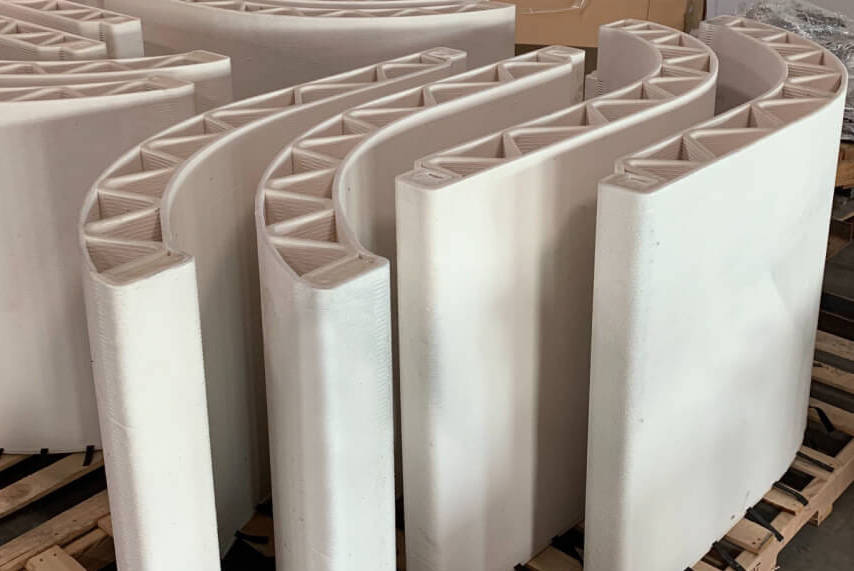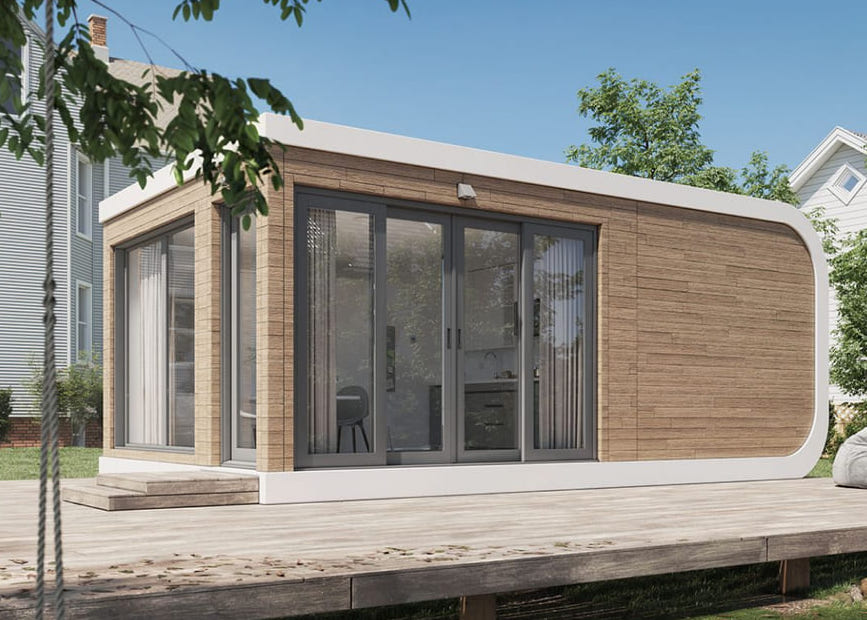3D printing construction start-up Mighty Buildings has raised $30 million in funding, and announced that it’s now exiting stealth mode.
Having quietly conducted R&D on its proprietary 3D printing technique since 2017, the company is now launching as a fully-fledged ‘production-as-a-service’ business. The firm’s first investment round was led by Khosla Ventures, with participation from venture capitalists Y Combinator, SV Angel and CoreVC.
Mighty Buildings has used the additional funding to set up its Oakland factory and to scale its production line, enabling it to fully-3D print 350 square foot units. The company has also utilized the investment to begin delivering its hybrid products (part-3D printed, part-traditional construction) and to continue scaling and commercializing its technology.
Speaking to 3D Printing Industry, Sam Ruben, Co-founder of Mighty Buildings, laid out his vision for the company. “Our goal is to enable design-agnostic production-as-a-service for the construction industry,” said Ruben. “We want to build Mighty Factories around the world that allow builders and architects to create their designs in an efficient, cost-effective, sustainable, and style-forward way.”
“We don’t actually aspire to be the ones designing and creating a set product line of housing units; we want to be the means that enables others to bring their vision to life.”
Mighty Buildings’ exit from stealth mode
Based in Oakland, California, Mighty Buildings has operated in stealth mode since it was founded in 2017. Until recently, little was known about the company, but it has now unveiled its construction 3D printing technique alongside a $30 million investment round. Mighty Buildings’ printing process has been designed from the ground up to be scalable, and to construct continuously rather than build one-off structures.
Building quickly but safely quickly became the firm’s top priority. Mighty Buildings gained UL 3401 certification, an important construction safety qualification, before exiting stealth mode. In fact, the Mighty Buildings was the first 3D printing construction business or product to become 3401 certified. The company also delivered two units to customers, and made sure that they met key certification requirements for their builds, before launching its platform in full.
“Once we had made significant progress against our certification roadmap, we felt ready to launch from stealth knowing that we could quickly scale up to the commercial level we originally envisioned for the business,” said Ruben. “Our goal is not to just produce our own units for customers, we want to be a production platform for industry to allow the existing labor force to build more.”

Mighty Buildings’ 3D printing method
Mighty Buildings’ proprietary 3D printing material is central to its extrusion-based production technique. The company describes its stone-like minerals as “similar to Corian by Dupont,” an acrylic polymer used in the production of counter and bench tops. Uniquely, the material is able to harden almost immediately after UV post-curing, while still maintaining cohesion with its underlying layers.
The lightweight material’s ‘freezing’ ability enables the creation of ceilings and overhangs without the need for any underlying support structures. Post-processing can also be accomplished using robotic arms, leading to an accelerated, automated, 3D printing method. Once the company has fully-automated its process, it claims that its technique is up to 50 percent cheaper than traditional on-site construction, and 20-30 percent less expensive than traditional prefab methods.
“Up until this point, most other companies working with 3D printing for construction have done projects through one-off permitting processes, which allows them to move quickly in the short-term but isn’t really scalable at a commercial level.”
By comparison, existing construction 3D printing methods use cement, so they are unable to be post-processed automatically, and steel reinforcement is required for load-bearing structures. Concrete is thermally conductive as well, meaning that additional insulation is often added to maintain temperatures inside the finished building. By contrast, Mighty Buildings’ Corian-like material is less conducive, making it more energy efficient.
“Ultimately, our goal is to print the full shell of a house and then use robotic arms to pour insulation and apply finishes,” explained Ruben. “This will automate about 80 percent of the construction process, and the remainder (installing fixtures and appliances) will be done by humans.”

Safe as additive manufactured houses
Leveraging its proprietary additive manufacturing method, Mighty Buildings 3D printed a 350-square-foot ADU unit in less than 24 hours. The firm now plans to fabricate two hybrid buildings: one in San Ramon and the other in San Diego over the next year. Producing the structures in volumetric modules allows them to be customized too, and the tailor-made layouts present the opportunity for a range of applications from housing complexes to office buildings.
The company’s 3D printed houses reportedly cost 45 percent less to buy than traditional “stick-built” homes in California, and are 20 to 30 percent cheaper to build too. Mighty Buildings currently offers “Mighty House Kits,” priced from $185,000 to $285,000 which measure between 865 and 1440 ft in area. In future, the firm aims to put the power of its technology in the hands of others, allowing them to build bigger and more enterprising structures.
“We want to allow building officials and others to incrementally become comfortable with our technology, to help drive smooth adoption,” concluded Ruben. “In terms of size, we are actually more limited by over-road transport than by our printing area. We are currently targeting the ability to print two-story plus structures with a new fiber reinforced material that has the strength comparable to steel, enabling us to eventually create multi-level buildings.”
3D printing in the construction industry
The additive manufactured housing industry has become increasingly competitive in recent years, as more firms launch their own 3D printing methods, and construct more ambitious buildings.
Concrete specialists QUIKRETE and Contour Crafting Corporation, have collaborated to 3D print residential, commercial and industrial buildings around the U.S. The companies aim to build low-income housing and disaster relief facilities.
Danish 3D printing construction firm COBOD provided a live demonstration of its 3D printing technology at the international Bautec construction exhibition earlier this year. The company used the occasion to demonstrate a series of upgrades to their BOD2 3D construction printer.
In January 2020, SQ4D, an offshoot of the New York-based S-Squared 3D Printers (SQ3D), constructed the “largest permitted 3D printed home in the world.” The structure, spanning 1900 square feet, took 48 hours to build over eight days, and reportedly cost around $6,000 to print.
Nominations for the 2020 3D Printing Industry Awards are still open, let us know who is leading the industry now.
The fourth edition of the 3D Printing Industry Awards Trophy Design Competition is now underway. Enter your design for the chance to win a CraftBot Flow 3D printer.
To stay up to date with the latest 3D printing news, don’t forget to subscribe to the 3D Printing Industry newsletter or follow us on Twitter or liking our page on Facebook.
Are you looking for a job in the additive manufacturing industry? Visit 3D Printing Jobs for a selection of roles in the industry.
Featured image shows the 350-square-foot building that Mighty Buildings was able to construct using its proprietary 3D printing process. Image via Mighty Buildings.



